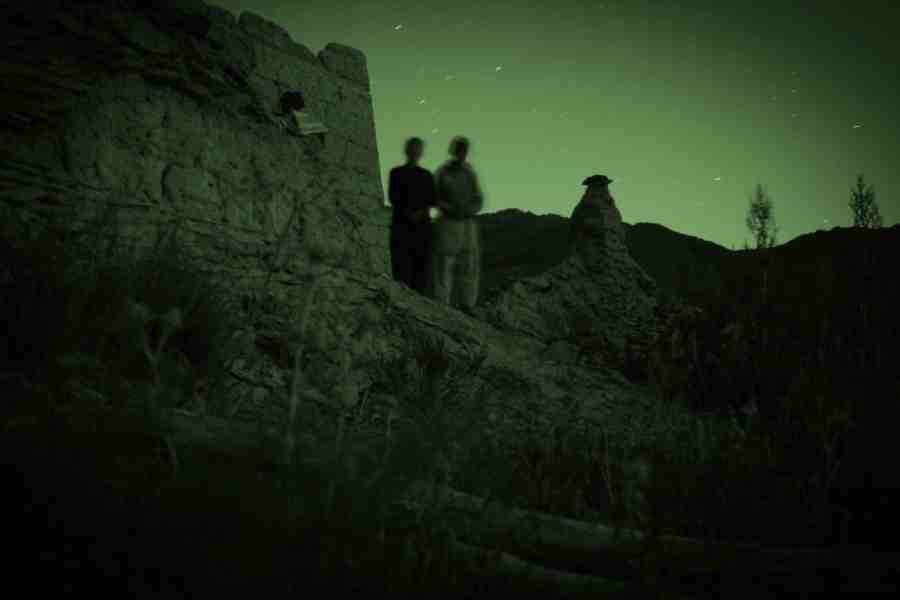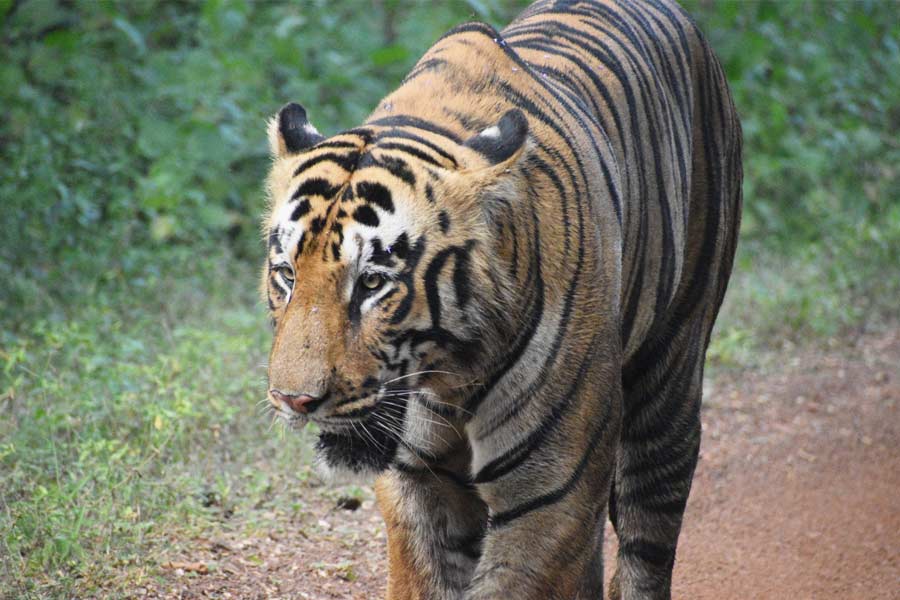Photography shares a voyeuristic relationship with war-torn nations. Images of American troops leaving Afghanistan, of the Taliban taking over the country, and of hapless Afghans flocking to airfields in a bid to escape the spectre of their reign are still fresh in our minds. While the chaos and the horror of those images had an immediate shock value, Aziz Hazara’s photographs are more ominous because they capture everyday realities where fear and the imprint of war loom large, even though they are not obvious. In No Starting Point for Revolution (on view at Experimenter, Ballygunge Place till June 17), Hazara, an artist from Wardak, Afghanistan, tries to convey the experience of what it is like to live in a war zone wherein the body and the landscape are inherently linked to conflict.
Camouflage, a series of photographs taken with military night-vision cameras used by soldiers to conduct raids in low-light situations, embodies this subliminal terror perfectly (picture). Nothing much happens in these eerie, green shots — they are like the lull before a storm or the silence in the aftermath of one. If it was not for the almost acid-green shade and the grainy texture introduced by the night-vision camera, this could have been a series of portraits of the unforgiving landscape of Afghanistan and the resilience of its people. Silhouettes of people standing in attention dot the large frames: are they petrified or just resigned to the unpredictability of life?
From the room next to where these photographs are displayed come sounds of sirens, the voice of the muezzin and, then, a chaotic jumble of voices. Takbir (2022), the video installation playing there, begins with a shot of a glittering Kabul — it could be any bustling city if it were not for the bar of light that streaks across the sky, followed by the appearance of a military surveillance blimp. The camera becomes unsteady and is then spun around in a dizzying motion making the lights streak across the screen until darkness cloaks everything, broken only by the dim circles of torchlight. The glittering Kabul is, all of a sudden, filled with the cries of takbir (the call, ‘Allahu Akbar’), the sounds of the US army’s sudden evacuation and, then, there is silence. Yet, the journey from the light to the dark is more than just a metaphor for a country being plunged into darkness. The darkness, Hazara shows, also provides scope to hide from the panoptic eye — be that of the US military or the Taliban.
Another video installation, Eye in the Sky (shot with a drone), shines light on Hazara’s subtlety. An aerial view shows little boys walking across barren swathes of land and hills. They congregate at their playground, which is an abandoned shell of a tank left behind, pull out their guns — are these toys or firearms that have been left behind? — pointing them at the sky (which, given the angle of the camera, is also directly at the viewer): the charade ends with all of them playing dead. The children are playing war. Arguably, children all over the world play war, but the ones in the video seem to have a sense of purpose and a precision in their postures that suggest first-hand experience. They are unmoved by an eye in the sky surveilling them. While the military cameras are intent on surveying, Hazara’s camera is concerned with the chronicling of memories and stories. The artist is fascinated with the camera as a register of colonial and militaristic histories. In another installation called Takbir (2021), a young man looks straight at the camera while self-flagellating. The rhythmic movement and the bold gaze dare the viewer to look away from the hits that keep coming.
Fear and surveillance are not the only legacies of war. The show ends with I am Looking for You Like a Drone, My Love, an image that can be best described as a sea of trash, not the debris of war like the tank and the gun, but all that the US army left behind, reducing a nation to a ‘wasteland’ in more ways than one.










